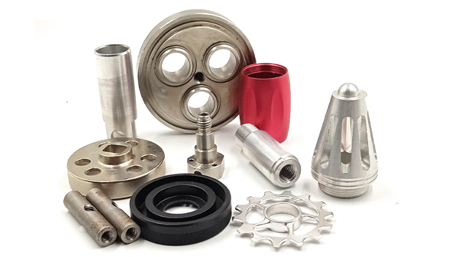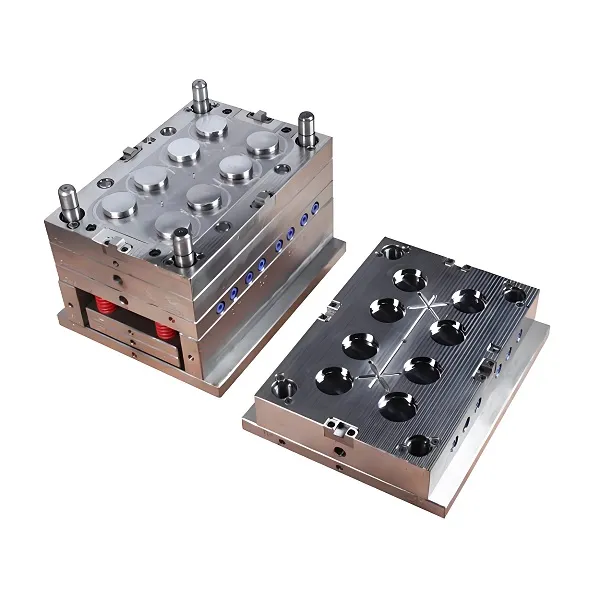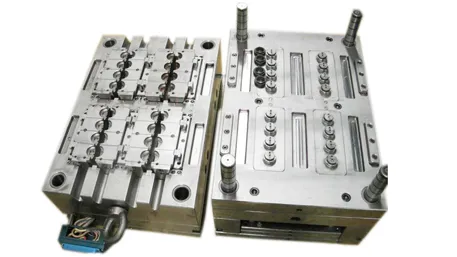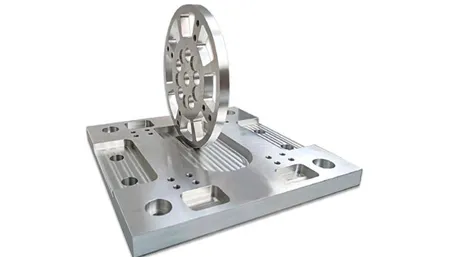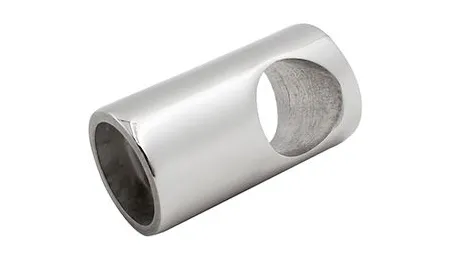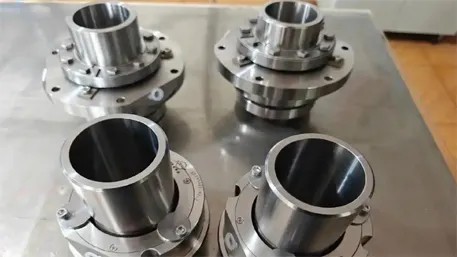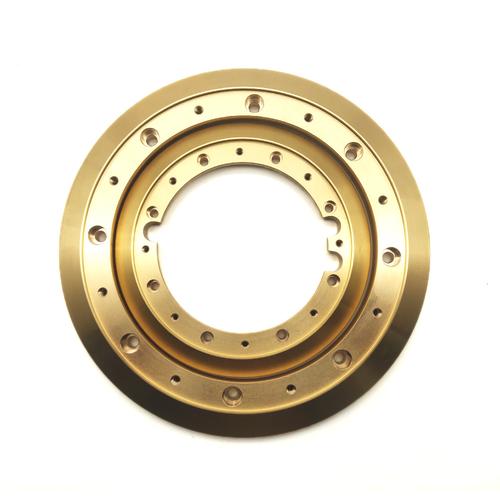In the ever – evolving landscape of medical technology, the demand for high – quality, precision – crafted metal parts is at an all – time high. From surgical instruments to implantable devices, custom CNC (Computer Numerical Control) medical metal parts play a pivotal role in enhancing the effectiveness, safety, and reliability of medical equipment. As the healthcare industry continues to push the boundaries of innovation, CNC machining has emerged as the leading manufacturing method for these critical components. This article delves into the technical capabilities, customization process, material selection, quality control, and industry applications of custom CNC medical metal parts.
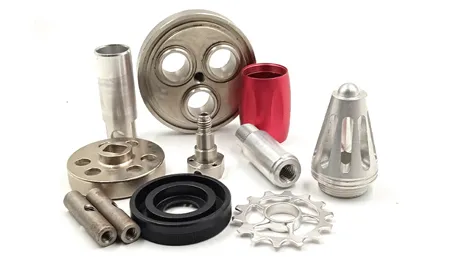
I. Technical Prowess: Redefining Precision in Medical Manufacturing
(A) Ultra – High Machining Accuracy
CNC machining systems are engineered with state – of – the – art technology to achieve unparalleled precision. The positioning accuracy of our advanced CNC machines reaches ±0.005mm, and the repeat positioning accuracy is maintained at ±0.01mm. This is achieved through a combination of high – resolution encoders, precision ball screws, and advanced servo – control systems. For example, when manufacturing the intricate components of a microsurgical instrument, such as the tips of forceps or the channels in catheters, the diameter and length tolerances can be held within ±0.005mm. This level of precision is crucial for ensuring the proper fit, function, and safety of medical devices. In implantable devices, precise dimensions are essential to guarantee compatibility with the human body and long – term stability.
(B) Complex Geometry Machining
Five – axis CNC machining technology has revolutionized the production of medical metal parts with complex geometries. This technology allows for simultaneous movement of five axes (X, Y, Z, A, and B), enabling the creation of parts with intricate contours, internal cavities, and multi – angled features in a single setup. The five – axis system uses advanced algorithms to calculate the optimal toolpath, ensuring that the cutting tool reaches every part of the workpiece without interference. For instance, in the production of orthopedic implants with complex surface geometries designed to promote bone ingrowth, the five – axis CNC machine can accurately mill the porous structures and unique shapes. Compared to traditional machining methods that often require multiple setups and are more prone to errors, five – axis CNC machining reduces setup – related errors from ±0.03mm to within ±0.01mm. Moreover, it boosts production efficiency by over 60%, significantly shortening the production cycle. This is particularly beneficial for medical device manufacturers who need to quickly prototype and produce new designs.
(C) Advanced Process Optimization
Medical metal part machining presents unique challenges, such as material deformation, surface finish requirements, and the need to maintain material integrity. To address these challenges, we implement a suite of advanced techniques. During the cutting process, we use high – speed machining (HSM) technology, which involves using high spindle speeds and optimized feed rates. HSM reduces the cutting forces, minimizing material deformation. For example, when machining titanium alloys for dental implants, the high – speed rotation of the cutting tool (up to 20,000 RPM) allows for efficient material removal while keeping the heat generated at a minimum, preventing any adverse effects on the material properties.
In addition, we use cryogenic cooling systems to further control the temperature during machining. Liquid nitrogen is applied directly to the cutting zone, cooling the tool and workpiece rapidly. This not only extends the tool life but also improves the surface finish of the part. For parts that require an ultra – smooth surface, such as the internal surfaces of syringes or the contact surfaces of implantable devices, we employ advanced finishing processes like electropolishing. Electropolishing uses an electrochemical process to remove a thin layer of material from the surface, resulting in a mirror – like finish with a surface roughness of less than Ra 0.1μm. This smooth surface reduces the risk of bacterial adhesion and improves the biocompatibility of the medical device.
II. End – to – End Customization: Tailoring Parts to Your Exact Needs
(A) In – Depth Requirement Analysis and Design Conceptualization
When you approach us with your medical metal part requirements, our experienced engineering team engages in detailed discussions to understand your application, performance expectations, and design preferences. We work closely with you to translate your ideas into actionable design concepts using state – of – the – art CAD/CAM software. Multiple design iterations are carried out in collaboration with you until the design perfectly aligns with your vision. Whether you need a custom – designed surgical instrument with ergonomic features or a new implantable device with innovative functionality, we have the expertise to bring your ideas to life.
(B) Strategic Material Selection and Cost Analysis
Based on the finalized design, we recommend the most suitable materials considering factors such as biocompatibility, mechanical properties, and cost – effectiveness. For implantable devices, materials like titanium alloys (such as Ti – 6Al – 4V) and 316L stainless steel are commonly used due to their excellent biocompatibility and corrosion resistance. For surgical instruments, high – strength alloys with good wear resistance, such as 420 stainless steel, may be preferred. Simultaneously, we conduct a comprehensive cost analysis, factoring in material costs, machining complexity, and production volume, to provide you with a transparent and competitive quote.
(C) Precision Manufacturing and Order Tracking
Once you approve the design and quote, production commences. You can track the progress of your order in real – time through our dedicated online tracking platform. Our skilled technicians follow strict manufacturing standards and use advanced CNC machines to produce parts that meet the highest quality benchmarks. We keep you informed at every stage of the production process, from raw material procurement to the final machining operations.
(D) Rigorous Quality Assurance and Timely Delivery
After production, each medical metal part undergoes a rigorous quality inspection. Only parts that meet our exacting standards are shipped to you. We perform dimensional inspections using coordinate measuring machines (CMMs) to ensure that all critical dimensions are within ±0.005mm. Surface finish measurements are also taken to ensure that the surface meets the required roughness specifications. In addition, we conduct biocompatibility tests, corrosion resistance tests, and mechanical strength tests to validate the performance of the part. We also offer comprehensive after – sales support, addressing any concerns you may have during the product’s lifecycle.
III. Strategic Material Selection: Choosing the Right Material for the Job
(A) Titanium Alloys: Biocompatible and Strong
Titanium alloys, such as Ti – 6Al – 4V, are widely used in medical applications, especially for implantable devices. Ti – 6Al – 4V has a density of around 4.43 g/cm³, which is much lower than that of steel, making it lightweight yet strong. It has a tensile strength of up to 900 MPa and a yield strength of approximately 830 MPa. The alloy contains 6% aluminum and 4% vanadium, which enhance its strength and corrosion resistance. Its biocompatibility is excellent, as it does not cause significant immune responses when implanted in the human body. This makes it suitable for orthopedic implants, dental implants, and cardiovascular stents.
(B) 316L Stainless Steel: Corrosion – Resistant and Reliable
316L stainless steel is another popular choice for medical applications. It has a density of 7.98 g/cm³ and contains 2 – 3% molybdenum, which significantly improves its resistance to chloride – induced corrosion. The tensile strength of 316L stainless steel is ≥485 MPa, and the yield strength is ≥170 MPa. It is often used in the production of surgical instruments, as well as some implantable devices where a lower cost alternative to titanium alloys is acceptable. Its good formability and machinability make it easy to shape into complex geometries.
(C) 420 Stainless Steel: High – Strength and Wear – Resistant
420 stainless steel is a martensitic stainless steel that offers high strength and wear resistance. After heat treatment, it can achieve a hardness of up to HRC 50 – 55. It has a density of 7.75 g/cm³ and a tensile strength of ≥520 MPa. 420 stainless steel is commonly used in the manufacturing of surgical scalpels, forceps, and other instruments that require sharp edges and durability. Its high carbon content contributes to its hardness and wear – resistance properties, ensuring long – term performance in demanding surgical environments.
IV. Stringent Quality Control: Ensuring Top – Notch Medical Parts
(A) Raw Material Inspection
All incoming raw materials for medical metal parts are subject to strict quality checks. We use spectroscopic analysis to verify the chemical composition of metals, ensuring that they meet the required standards. For example, when using Ti – 6Al – 4V, we confirm that the aluminum and vanadium contents are within the specified ranges. Additionally, hardness testing, tensile testing, and metallographic analysis are performed to ensure the material’s integrity. For stainless steels, we also check for the presence of impurities that could affect the corrosion resistance and biocompatibility of the final product.
(B) In – Process Monitoring
Throughout the manufacturing process, we employ statistical process control (SPC) techniques to monitor key manufacturing parameters. Regular sampling and data collection help us identify and correct any potential issues promptly. We monitor parameters such as cutting forces, spindle speeds, and feed rates during machining. If any parameter deviates from the set values, we can adjust the machining process in real – time to ensure consistent product quality. In addition, we use in – line sensors to monitor the temperature and vibration during machining, which can affect the dimensional accuracy and surface finish of the part.
(C) Final Product Validation
Before shipping, each medical metal part undergoes a comprehensive inspection. We use CMMs to verify dimensional accuracy, ensuring that all critical dimensions are within ±0.005mm. Surface roughness measurements are taken to ensure that the surface meets the required specifications. In addition, we conduct biocompatibility tests in accordance with international standards, such as ISO 10993, to ensure that the part does not cause any adverse reactions when in contact with the human body. Corrosion resistance tests, such as the salt – spray test, are also performed to validate the long – term durability of the part. Only parts that pass all these tests are considered ready for delivery.
V. Diverse Industry Applications: Empowering Healthcare Advancements
(A) Surgical Instruments
Custom CNC – machined medical metal parts are widely used in the production of surgical instruments. From scalpels and forceps to laparoscopic tools, the precision and quality of these parts are crucial for the success of surgical procedures. The ability to create sharp edges, smooth surfaces, and ergonomic designs using CNC machining enhances the performance and safety of surgical instruments. For example, custom – designed laparoscopic graspers with precisely machined jaws can provide better tissue handling and reduce the risk of tissue damage during minimally invasive surgeries.
(B) Implantable Devices
In the field of implantable devices, custom CNC medical metal parts are used to create orthopedic implants, dental implants, and cardiovascular stents. The high precision of CNC machining ensures that these implants fit perfectly in the human body, promoting osseointegration (in the case of orthopedic and dental implants) and preventing complications such as implant loosening or migration. For example, custom – made orthopedic knee implants with complex geometries can better mimic the natural joint anatomy, improving patient mobility and reducing pain.
(C) Medical Equipment
Custom metal parts are also used in the production of medical equipment such as X – ray machines, MRI scanners, and laboratory equipment. These parts need to be highly precise and reliable to ensure the accurate functioning of the equipment. For example, the metal components in an X – ray tube need to be machined to exact tolerances to ensure proper electron beam focusing and X – ray generation.
VI. Frequently Asked Questions (FAQ)
(A) What is the typical precision of custom CNC medical metal parts?
Our CNC machining can achieve a dimensional tolerance of ±0.005mm, ensuring that the parts are manufactured to the highest precision standards required in the medical industry.
(B) How do I choose the right material for my medical metal part?
The choice depends on your application’s requirements. For implantable devices, materials with excellent biocompatibility, such as titanium alloys and 316L stainless steel, are recommended. For surgical instruments, materials with high strength and wear resistance, like 420 stainless steel, are often preferred.
(C) What is the lead time for custom medical metal parts?
Lead times vary depending on the complexity of the design and order quantity. Simple designs can be completed in 3 – 5 days, while more complex ones may take 7 – 10 days. Rush orders are available upon request.
(D) Can CNC machining handle complex medical metal part designs?
Absolutely. Our five – axis CNC machines can fabricate parts with intricate geometries, including unique shapes and internal structures, meeting even the most demanding design requirements in the medical field.
(E) How much does it cost to customize a medical metal part?
Costs are determined by factors such as material, design complexity, precision requirements, and order quantity. While small – batch customization may be relatively costly, economies of scale can significantly reduce per – unit costs for larger orders.
VII. Customer Testimonials
A leading medical device manufacturer approached us to develop custom – designed orthopedic implants. Our team used five – axis CNC machining to achieve the required precision of ±0.005mm. The implants not only met the strict quality standards of the medical industry but also improved patient outcomes. As a result, the manufacturer was able to expand their product line and gain a competitive edge in the market.
A surgical instrument company needed custom – made laparoscopic tools. We implemented advanced machining techniques and rigorous quality control measures to ensure that the tools met the highest surgical standards. The customer reported increased surgical efficiency and reduced complications, leading to improved patient satisfaction.
Reach Out Now for Your Custom CNC Medical Metal Parts!
Regardless of your medical application, our team of experts is ready to collaborate with you. We offer a seamless end – to – end service, from design to delivery. Contact us today to discuss your project requirements and take the first step towards getting top – quality custom CNC medical metal parts.
